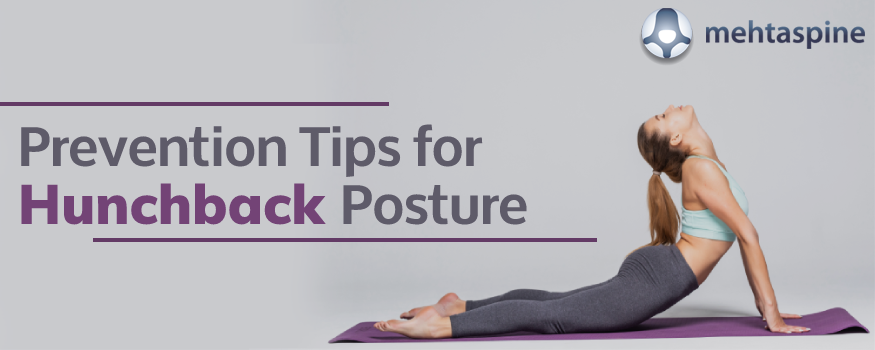Prevention Tips for Hunchback Posture
Hunch back is an abnormal curvature of the spine that results in excessive rounding of the upper back. Though the spine in this region has a natural curve to support the weight of the head and absorb natural shocks, in few cases this curve can be excessive leading to a rounded upper back. In severe cases, this excessive curvature can result in a visible hump in the upper back, commonly termed as a hunchback.
While rounding off the upper back is fairly common, the hunchback is a severe problem that occurs when the rounding is severe and so is spinal curvature. While in major cases rounded upper back is treated using posture exercises and bracing by spine specialists in the UK, in few cases the hunchback posture can deteriorate and cause pain and complication like breathing problems. In this blog here we help you improve your awareness about postural hunchback condition, its symptoms, causes and tips to prevent this condition. Read on:
Symptoms of Hunchback Posture:
A hunchback is the obvious giveaways but symptoms of kyphosis always start mild. It starts with rounded shoulders, mild pain in the upper back, fatigue and spine stiffness which over time can progress to weakness, loss of sensation and shortness of breath.
Causes of Kyphosis or Hunchback Posture:
Poor posture and bad movement patterns are considered as common causes of hunch back posture. With the increase in the usage of smartphones, tablets, laptops people foster, people, spend a major part of the day in a slouched position with head forwards which rounds the shoulders and brings the head forward. As the head juts forwards the head puts extra pressure on the upper back which over time can develop into a hunched back if proper treatment is not taken.
How to prevent hunchback posture?
Hunchback caused by bad posture and movement patterns can be rectified by following an exercise regimen recommended by Spine Surgeons in the UK. These exercises strengthen the upper back muscles which commonly weakened due to bad posture. Some of the exercise that helps include:
- Pectoral stretch
- Upper back stretch
- Chin Tucks
- Wall Pushups
- Scapular squeezes
Spine specialists often suggest physical therapy to help patients learn the above exercises. The hunchback posture is a result of years of improper posture, so it does take time even months to rectify your posture problem. We advise you to stick to the exercises and perform them consistently to get rid of the hunchback and improve your posture.
In addition to bad posture and movement patterns, the excessive curvature can also be caused by compression fractures, degenerative changes, muscular weaknesses, or even osteoporosis. The risk of hunchback posture is significantly higher when bad movement patterns, and improper posture further add-on these risk factors.
While hunchback caused by bad posture can be rectified and even prevented by exercises that strengthen the upper back muscles, the excessive curvature caused by other medical problems must be treated by an orthopaedic spine surgeon in UK as soon as possible. If you are in the UK and are looking for a spine specialist to get rid of your hunchback, then Children and Adult Spinal Surgeon Mr Jwalant S Mehta can help you. You can contact him here: https://www.mehtaspine.co.uk/


